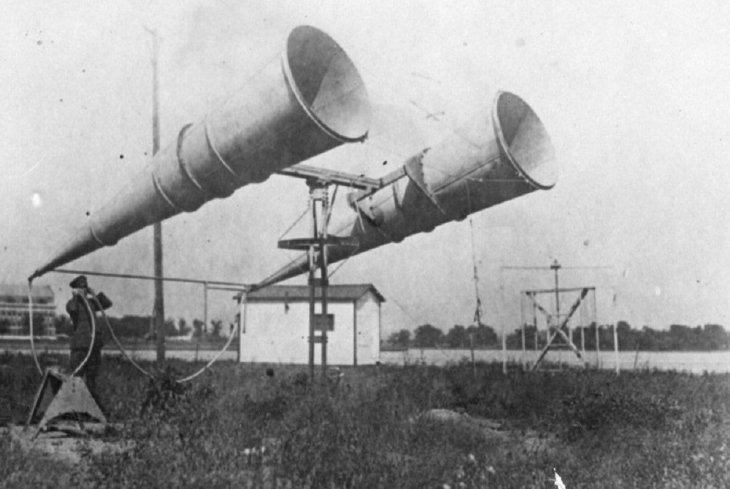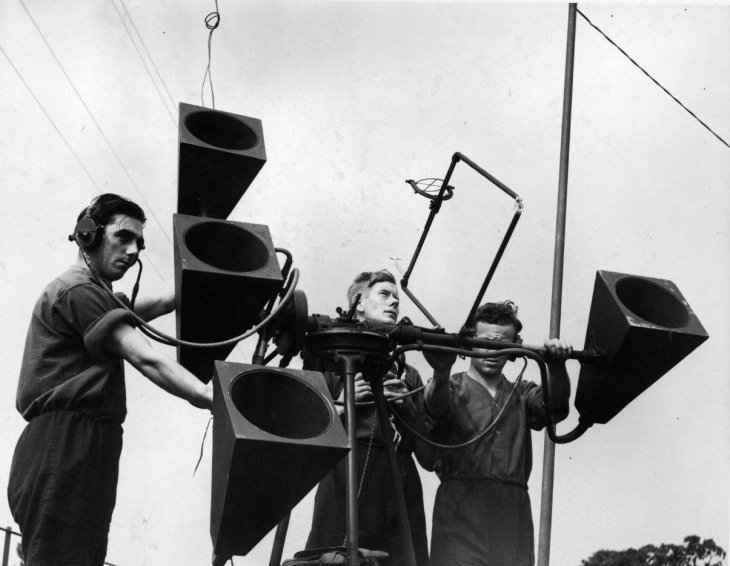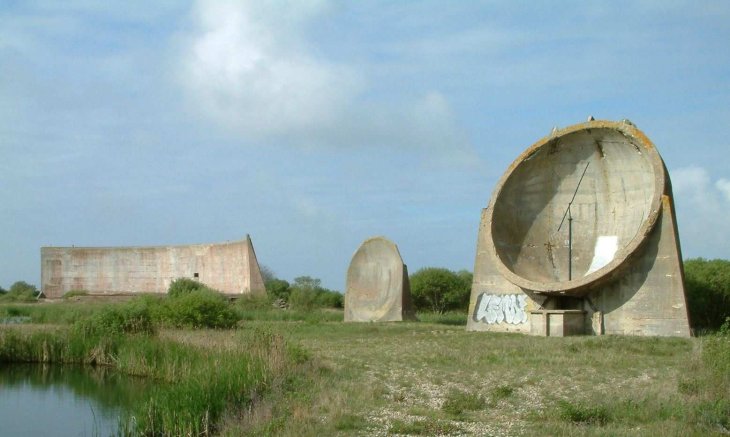How Armies Detected Enemies' Warplanes Before The Radar: Using These Odd-Looking War Tubas
Dhir Acharya - Apr 27, 2020

Before the creation of radars, armies used odd-looking war tubas and acoustic mirrors to detect warplanes of their enemies. How did they work?
- 21 Strongest Militaries In 2021 That You Should Know
- This AI Defense System Forces Drones To Land Autonomously
- China's New Suicide Drones Pose Dangers To Other Countries' Defense Systems
The radar was invented during World War II, so before that how did armies detect planes of enemies? They used “sound locators” and in fact, those tools looked like musical instruments rather than war tools. These tools first appeared during World War I, used by Britain and France armies to detect Zeppelin airships of German.“War tubas” were essentially large horns connected to a stethoscope.

According to Phil Judkins, a war historian and Visting Fellow at the University of Leeds, “war tubas” was a great development of artillery sound ranging. He also explains its operation.
This device captured sound, transmitted to human ears. By analyzing and measuring sound, vibration, and the time it takes the sound to reach the ears, people could determine the distance of the aircraft and have more time to prepare.
Limited range

Phil Judkins said its basic structure included 3 horns arranged in a vertical line and one more horn on the side. The central horn was to get vibration from aircraft and the others to help calculate the distance. The operators would listen to the sounds through stethoscopes and adjust the horns to get the loudest sound then they could determine the direction, height, and distance of aircraft.
However, this tool could only locate aircraft from a few kilometers away so it was really superior to directly destroying with aircraft.
Acoustic mirrors

The acoustic mirror was another tool created by the British to improve the range of sound localization. It was a concrete static sound locator that looked like a dish or a curved wall. It was first tested in England’s southern and eastern coast during World War I and after that put into construction in many places during the 1920s and 1930s. These Acoustic Mirrors could be up to 9 meters in diameter and one wall in Kent was even 61 meters long. In this period, other countries including Japan, Germany, and the US were also trying to develop sound locators.
Judkins asserted the effectiveness of these walls:
"The large concrete sound locators were obviously immovable but they had better range, about 10 to 15 miles, which would give one in Yorkshire listening to a Zeppelin approaching at a speed of 60 miles an hour a 15-minute warning of its arrival."
Obsolete, but not forgotten

After 1930, armies used microphones for capturing and amplifying sound and in 1939, they could transform noise into visual symbols with the most advanced systems at that time. This was an idea of Alan Blumlein, the inventor of stereophonic sound.
Thanks to the improvement of sound locating technology, the army could detect aircraft from about 32 kilometers away. This was very important when the speed of aircraft was rising too.
Aircraft were faster and faster so sound locators became too old and slow. The birth of radar during World War II was a major step in the military when radar could identify aircraft from 129 kilometers away.
You can find some Acoustic Mirrors still remain until now in England and some are being restored.
>>> Do Bollywood Movies Accurately Portray The Indian Army?
Featured Stories

Features - Jul 01, 2025
What Are The Fastest Passenger Vehicles Ever Created?

Features - Jun 25, 2025
Japan Hydrogen Breakthrough: Scientists Crack the Clean Energy Code with...

ICT News - Jun 25, 2025
AI Intimidation Tactics: CEOs Turn Flawed Technology Into Employee Fear Machine

Review - Jun 25, 2025
Windows 11 Problems: Is Microsoft's "Best" OS Actually Getting Worse?

Features - Jun 22, 2025
Telegram Founder Pavel Durov Plans to Split $14 Billion Fortune Among 106 Children

ICT News - Jun 22, 2025
Neuralink Telepathy Chip Enables Quadriplegic Rob Greiner to Control Games with...

Features - Jun 21, 2025
This Over $100 Bottle Has Nothing But Fresh Air Inside

Features - Jun 18, 2025
Best Mobile VPN Apps for Gaming 2025: Complete Guide

Features - Jun 18, 2025
A Math Formula Tells Us How Long Everything Will Live

Features - Jun 16, 2025
Comments
Sort by Newest | Popular